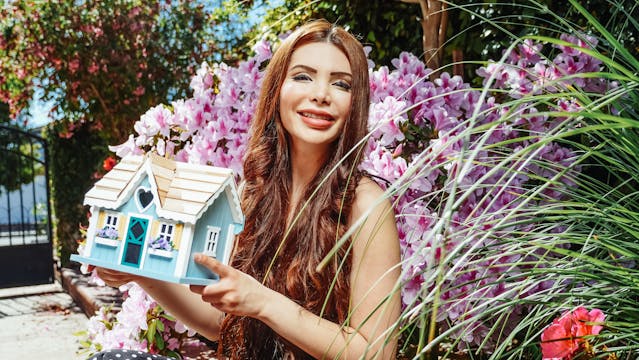Landscape design involves creating an outdoor space reflecting your style while connecting to nature. Powerful elements like flowers uplift design with vibrant colors, fragrances, textures transforming spaces into havens of beauty and tranquility. We’ll explore incorporating flowers for truly blissful outdoor experiences.
1. Choosing the Right Flowers for Your Landscape:
The first step is choosing flowers for your garden. Consider climate, soil, and sunlight when selecting flowers. Native plants often require less care as they adapt well locally. Also think about colors and how flowers complement each other for a stunning look.
2. Creating a Strategic Planting Plan:
Choose flowers by height, bloom time, and growth. Group similar water and sun needs together for easy care. Mix annuals and perennials for color all year, keeping your yard lively in each season.
3. Designing Focal Points:
Flower beds, borders, or islands placed strategically draw attention and create visual interest. A well-designed centerpiece makes your outdoor space more inviting and memorable.

4. Integrating Flowers into Hardscape Features:
Plant flowers around paths, between pavers, or in built-in pots to soften hard structures. This blending of nature and the built blends seamlessly for a harmonious design.
5. Creating a Butterfly and Pollinator Haven:
Flowers attract pollinators like bees and butterflies. Plant nectar-rich flowers such as lavender, coneflowers, and salvia. This adds movement and life to your garden while helping insects.
6. Layering and Texture:
Achieve floral bliss by layering flowers with varied shapes, sizes, textures. Tall flowers like sunflowers, delphiniums add vertical interest. Ground covers like creeping thyme, ajuga add color. Layering creates depth, dimension.
7. Seasonal Interest:
Plan your garden with flowers blooming each season. Spring bulbs, summer perennials, fall asters and winter plants mean joy year-round. Carefully plan succession so something is always blooming to admire.
8. Implementing Sustainable Practices:
Create a healthier outdoor space using sustainable practices in floral landscape design. Use organic fertilizers and mulch to conserve water. Sustainable gardening helps the environment and keeps your floral haven healthy and beautiful long-term.
9. Maintenance Tips for a Flourishing Garden:
Tending to a garden with many flowers takes effort. Remove dead blooms regularly to allow new growth, remove weeds blocking resources, and water properly. Know what each flower needs to care for a lush garden.
10. Outdoor Living Spaces Enhanced with Flowers:
Bring the beauty of flowers to outdoor spaces by including them in patios, decks, or balconies. Use container gardening with colorful flowers to bring nature to smaller spaces. Hanging baskets, pots, and vertical gardens creatively add flowers to outdoor areas, connecting indoor and outdoor spaces.
Adding flowers to your landscape design goes beyond looks. It’s about making a place where nature and design work together. Pick flowers thoughtfully, plan smart, and garden sustainably. This lets your landscape boost beauty, wellness, and the earth. So enjoy floral joy – let your yard bloom with colors, scents, and feels.
